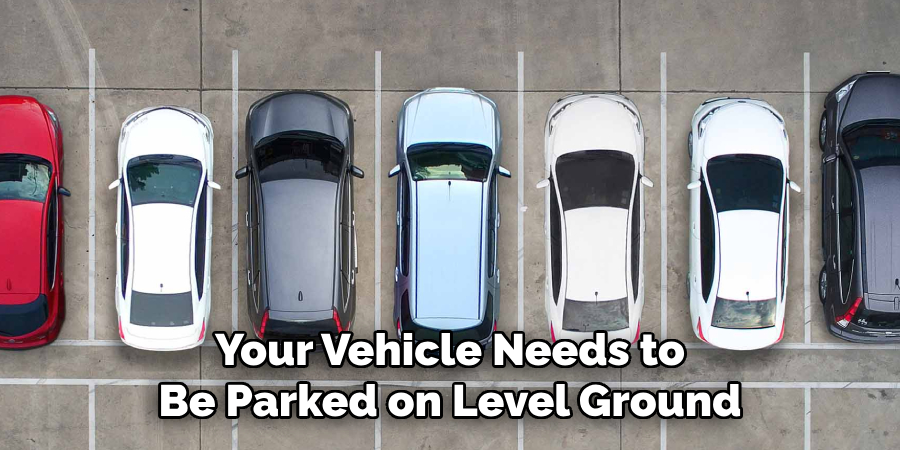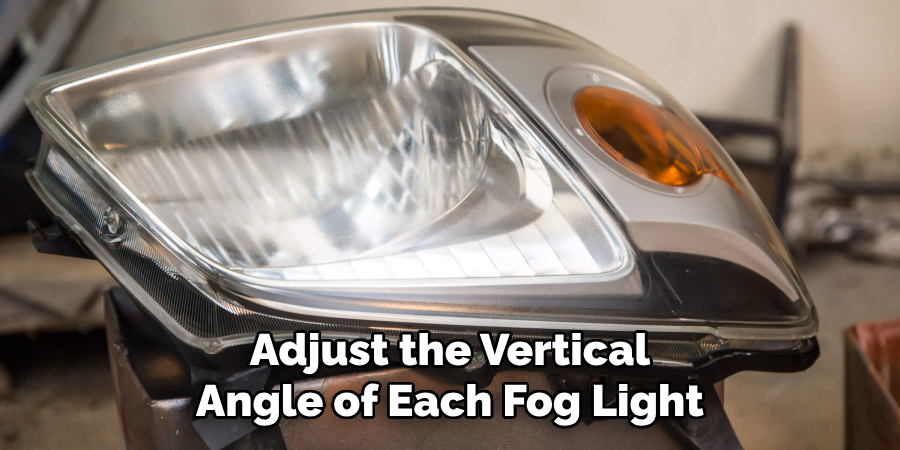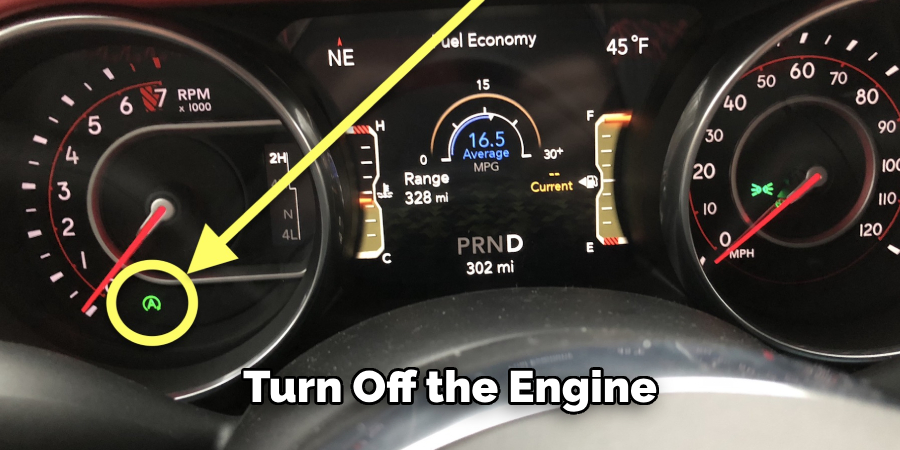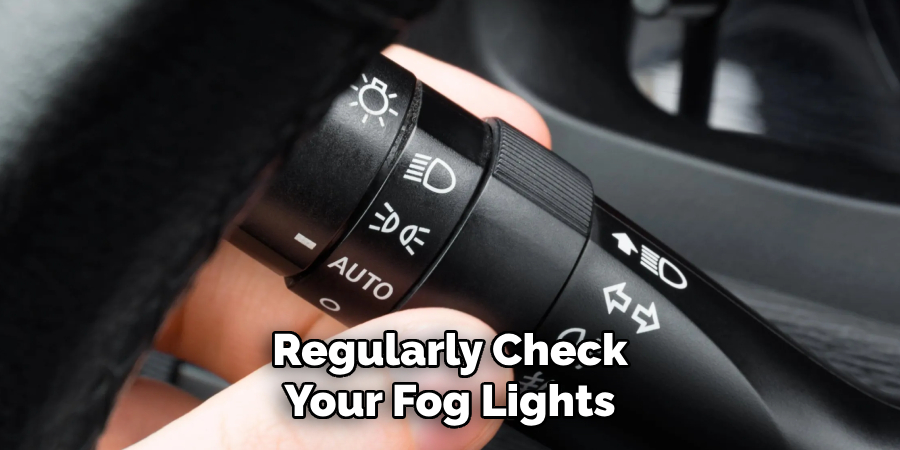Driving on a foggy night can be scary without properly adjusted fog lights. As the fog rolls in, visibility drops dramatically, making it nearly impossible to see what’s ahead on the road. All too often, poorly adjusted or non-existent fog lights make a terrible situation even worse.

However, with just a few minutes of simple adjustments, you can gain insight into your path forward and feel much more confident behind the wheel, even in the thick pea soup conditions. In this blog post, I’ll walk through the easy steps on how to adjust fog lights to optimize your vehicle’s fog lights so you can see clearly and react accordingly the next time fog blankets your journey.
Necessary Items
Before you get started, make sure you have the following items on hand:
- Measuring tape or ruler
- Masking tape
- Screwdriver (if necessary)
10 Steps on How to Adjust Fog Lights
Step 1: Measure the Height of Your Fog Lights
The first step is to measure the height of your fog lights from the ground. This measurement will serve as a reference point for adjusting their angle later. Use a measuring tape or ruler to get an accurate reading.
Step 2: Park Your Vehicle on Level Ground
To properly adjust your fog lights, your vehicle needs to be parked on level ground. This will ensure that the measurements and adjustments are accurate and consistent.

Step 3: Turn on Your Fog Lights
Before making any adjustments, ensure your vehicle is in the park and turn on your fog lights. This will allow you to see the light beams and ensure they function correctly.
Step 4: Measure the Distance Between Your Fog Lights
Using a measuring tape or ruler, measure the distance between your fog lights. This will help you determine the appropriate angle for each morning.
Step 5: Mark the Center of Each Fog Light Beam
Next, using masking tape, mark the center of each fog light beam on a wall or garage door in front of your vehicle. This will create a visual guide for adjusting the lights.

Step 6: Check Your Owner’s Manual
Refer to your vehicle’s owner’s manual for specific instructions on adjusting your fog lights. Some cars may require a screwdriver or other tools for adjustments.
Step 7: Adjust the Horizontal Angle of Your Fog Lights
Using the reference points you marked earlier, adjust the horizontal angle of each fog light until they are aimed straight ahead and parallel to each other. This will ensure an even distribution of light.
Step 8: Adjust the Vertical Angle of Your Fog Lights
Next, adjust the vertical angle of each fog light. The beams should be aimed slightly downward and slightly to the right to avoid blinding oncoming traffic. Use your measuring tape or ruler for accuracy.

Step 9: Test Your Fog Lights
After making adjustments, test your fog lights by turning them off and back on. Make any necessary tweaks to the angle to ensure optimal visibility.
Step 10: Secure Your Fog Lights
Once you are satisfied with the angle of your fog lights, use a screwdriver (if necessary) to secure them in place. This will ensure they stay in position while driving.
Foggy conditions can be dangerous, but with adequately adjusted fog lights, you can navigate through them safely and confidently. Following these ten simple steps ensures that your vehicle’s fog lights are continually optimized for maximum visibility. Remember to regularly check and adjust your fog lights to maintain optimal performance.
8 Things to Avoid When Adjusting Fog Lights
1. Avoid Adjusting Your Fog Lights While Driving
Attempting to adjust your fog lights while driving is dangerous and ineffective. It is important to park your vehicle on level ground and turn off the engine before making any adjustments.

2. Avoid Incorrect Angles
Improperly adjusted fog lights can be just as hazardous as having no fog lights. Follow the recommended angles in your owner’s manual to ensure optimal performance.
3. Avoid Blindly Adjusting Your Fog Lights
When adjusting your fog lights, it is essential to have a reference point, such as the beams on a wall or garage door. This will help you make accurate adjustments and avoid blinding other drivers.
4. Avoid Touching the Bulbs
Fog light bulbs can get very hot, so it is essential to let them cool down before adjusting. Touching a hot bulb can not only be dangerous but also cause damage to the light.
5. Avoid Improper Distance Between Fog Lights
Make sure to measure the distance between your fog lights and adjust their angle based on that measurement. An incorrect distance between them can lead to uneven lighting and reduce visibility.
6. Avoid Forgetting to Turn Off Your Fog Lights
After making adjustments, turning off your fog lights before returning to the road is essential. Driving with them still on can not only be distracting but also blind other drivers.
7. Avoid Over-Adjusting Your Fog Lights
Making minor, precise adjustments is critical to properly adjusting your fog lights. Over-adjusting them can lead to uneven lighting and decreased functionality.
8. Avoid Neglecting Regular Maintenance
It is essential to regularly check your fog lights for any damage or misalignment and make adjustments as needed. Neglecting maintenance can lead to poor visibility during crucial moments on the road.

By following these simple steps and avoiding common mistakes, you can ensure that your fog lights are always in top condition and provide optimal visibility. Remember to regularly check and adjust your fog lights to maintain safe driving conditions in any weather. Stay safe out there on the road!
8 Additional Tips for Safe Driving in Foggy Conditions
1. Slow Down and Maintain a Safe Following Distance Behind Other Vehicles
In foggy conditions, visibility is limited, making it crucial to reduce your speed and leave enough space between yourself and the vehicle in front of you. This will allow for more reaction time in sudden stops or turns.
2. Use Your Low Beams Instead of High Beams
High beams can reflect off the fog and create a glare, further reducing your visibility. Switching to low beams can help you see more clearly and avoid blinding other drivers.
3. Avoid Using Hazard Lights
Contrary to popular belief, using hazard lights in foggy conditions can be dangerous as it can make it difficult for other drivers to determine your position on the road. Stick to using your regular headlights.
4. Use the Right Side of the Road as a Guide
When visibility is severely limited, use the right side of the road or lane markers as a guide to stay on your intended path.
5. Avoid Sudden Braking or Turning
Fog can make it difficult for other drivers to see you, so avoid making sudden moves that could catch them off guard. Use your signals early and gradually brake or turn to give other drivers enough time to react.
6. Keep Your Windows Clean
Dirty windows can further reduce visibility in foggy conditions. Clean your windshield and all other windows regularly for optimal visibility while driving.
7. Stay Alert and Focused
Fog can be unpredictable, so it is essential to maintain focus and stay alert while driving in these conditions. Keep distractions, such as loud music or phone usage, to a minimum.
8. Pull Over if Visibility Becomes Too Poor
If the fog becomes too thick and impairs your ability to see the road, it is best to pull over in a safe location until visibility improves. Only continue driving once conditions have improved.
By following these additional tips and practicing safe driving habits, you can confidently navigate foggy conditions and avoid potential accidents. Always prioritize safety on the road and adjust your driving accordingly to weather conditions. Stay safe out there! After all, arriving a little later than not at all is better.
Frequently Asked Questions
How Often Should I Adjust My Fog Lights?
Checking and adjusting your fog lights every six months or as needed is recommended. Factors such as driving conditions and wear on the vehicle can affect the alignment of your fog lights.
Can I Adjust My Fog Lights Without a Screwdriver?
Some vehicles may require a screwdriver or other tools for adjusting fog lights. Refer to your owner’s manual for specific instructions on adapting your fog lights for your particular vehicle.
Is It Necessary to Turn Off My Fog Lights?
Yes, turning off your fog lights when not needed is essential. Driving with them still on can be distracting and blind other drivers.
What Should I Do If My Fog Lights Are Still Not Functioning Properly After Adjustments?
If your fog lights are still not functioning correctly after adjustments, they may need to be replaced, or there may be an electrical issue. Consult a professional mechanic for further assistance. Proper maintenance and regular adjustments are vital to ensuring the best performance from your fog lights. So follow these ten steps and avoid the abovementioned things to ensure safe driving in foggy conditions.
Conclusion
In conclusion, fog lights are essential to any car’s lighting system. By understanding how they work and how to adjust fog lights, you can ensure your safety and the safety of other drivers on the road. From checking the level and alignment to using a professional headlight aiming tool, there are various ways to adjust fog lights depending on your specific make and model.
Feel free to seek help from a mechanic or dealership. Having your fog lights properly adjusted is always better than risking poor visibility on the road. Remember, clear vision is crucial for safe driving, especially in hazardous weather conditions. So take the time to regularly check and adjust your fog lights, as it can make all the difference in preventing accidents.

